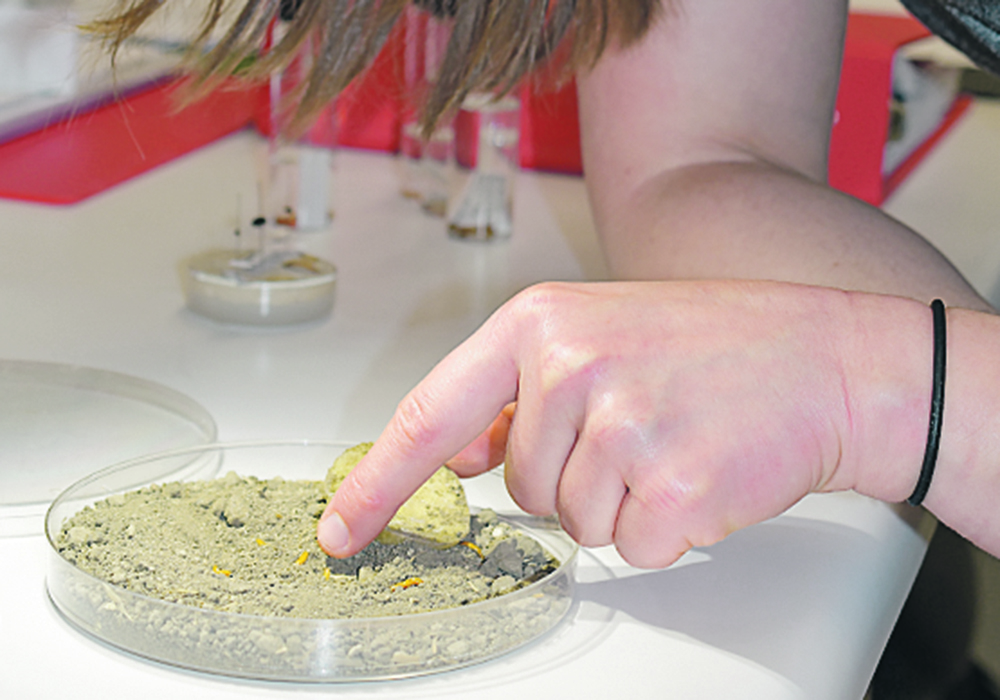Researcher hopes to help producers know when they have a wireworm problem by taking aerial photos of wheat crops
Pests that attack a plant when it’s just emerging can do a lot of damage.
That includes wireworms, which feed on wheat crops during the very early stages of the growing season.
“A very young, young plant, or even a seed that’s just germinating, is very vulnerable to death with just a few bite marks in the right place,” said Haley Catton, a cereal crop entomologist with Agriculture Canada in Lethbridge.
Wireworm feeding can cause thin wheat stands or yellowing of the plant. The pest has become a major problem for many cereal growers in southern Alberta and parts of southern Saskatchewan.
Read Also

Phosphate prices to remain high
Phosphate prices are expected to remain elevated, according to Mosaic’s president.
To reduce such damage, wheat growers on the Prairies now have an insecticide to control wireworms in their wheat fields.
In October, Health Canada’s Pest Management Regulatory Agency registered an insecticide from BASF called Broflanilide, which is effective against wireworms, the larval stage of click beetles. Broflanilide is branded as Teraxxa F4 and sold as a seed treatment.
But how does a grower decide if they have a wireworm problem?
Catton is hoping to answer that question using drones and aerial photos of wheat crops.
This year, she’s been recruiting farmers in southern Alberta, within a 90 minute drive of Lethbridge, to participate in a wireworm study.
Catton and her team plan to take photos of wheat and durum fields this June and identify parts of the field where the plant stand is thin.
They will then return to the same fields in 2022 before seeding and sample the soil for wireworms.
“The photos can tell us what part of the fields are in good health, or not. But they don’t tell you why,” said Catton.
“(We’ll) sample for wireworms inside those patches, and outside those patches in areas that (looked) fine, to see if we can get a difference in wireworm numbers, or species or soil moisture. What is the difference between those thinned areas and those areas that look good?”
Catton has been studying wireworms for about five years and she’s learned a great deal about the pest, including:
- There are four main species on the Prairies.
- Most fields have more than one species.
- The different species have different feeding behaviours.
- Rotating crops away from cereals doesn’t work because the wireworms persist in the soil, as they also feed on pulses and canola.
As well, neonicotinoid seed treatments only suppress wireworm activity. They don’t kill wireworms.
“Growers have struggled for years with wireworms in cereals… with available products deterring rather than eliminating wireworms,” said Chris Hewitt of BASF Canada.
Catton’s study should help growers make a more informed decision about wireworms and how to control the pest.
“If we can detect a difference in wireworms in thin patches, compared to healthy parts of the field, then that’s the basis for an economic threshold…. It’s the start of one,” Catton said.
“The chemical tools are there. It’s just, when do we need to use them? That, I think, is the next big question for farmers.”
To provide more information about wireworms, Agriculture Canada has produced a field guide. It describes the different species, includes high resolution photos, describes how to take samples and includes wireworm facts. The guide is scheduled to be released this summer.
















